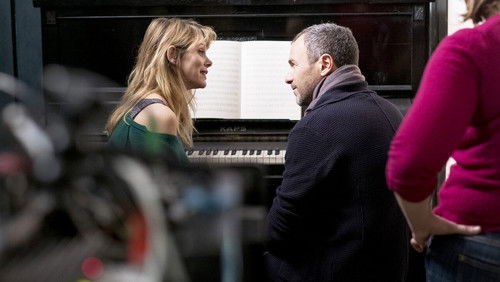Der Gefangene (1955)
14KDer Gefangene: Directed by Peter Glenville. With Alec Guinness, Jack Hawkins, Wilfrid Lawson, Kenneth Griffith. A Cardinal is arrested for treason against the state. As a Prince of his church, and a popular hero of this people, for his resistance against the Nazis during the war, and afterward his resistance when his country again fell to another totalitarian conqueror. In prison, his interrogator is determined to get a confession of guilt against the state from the strong willed man, and thus destroy his power over his people. The verbal and psychological battles are gripping and powerful, not even the increasing pressures put upon the Cardinal can force him to weaken, not even solitary confinement, continuous blazing light in his cell, sleeplessness, efforts to persuade him he is going mad. And yet, in the deepening conflict, the superb indomitable prisoner, creates a tremendous pity on his tormentor, the interrogator.
“Interesting play by Bridget Boland loosely based on the notorious fake trial of Cardinal Mindszenty of Hungary after a month of brainwashing by the communists in 1948. Alec Guinness was himself a catholic and is really living out his catholicism in this great performance of the live dissection of a catholic priest, extremely actual in todayu0026#39;s situation with the church immersed in scandals of pedophilia. Bridget Boland makes a very different story from the Mindszenty drama, making the interrogator (Jack Hawkins) an equal to the Cardinal as opponent and prosecutor and seems to be winning but actually loses in the end against the honesty of the Cardinal realizing his own futility, while the prosecutor- interrogator as a victor is the real loser and takes the consequences. Fascinating drama, which should be returned to again and again. In reality, Cardinal Mindszentyu0026#39;s brainwash process only lasted for less than a month and was chiefly conducted by the use of drugs and physical exhaustion. The only parallel torture that Alec Guinness is exposed to is forced insomnia. He is imprisoned for longer than three months with only private talks with the interrogator as a method and finally released, when the u0026quot;stateu0026quot; thinks it has won by ruining his reputation and exposing him as a fraud, while Cardinal Mindszenty was sentenced for life. The film was made in 1955, the year after saw the Hungarian revolt, and Cardinal Mindszenty was then set free and lived a long life, even writing books and his memoirs. He is still one of the most important icons of Hungary and will remain so. His shrine is at the ancient basilica of Esztergom north of Budapest, a very beautiful place by the Danube.”









